Inca Condiments Still Flavor Cuzco’s Food

So many things have changed since Inca times that envisioning Inca Cuzco often requires an enormous act of imagination amidst the Spanish colonial and the modern smog.
However some things, surprisingly, continue. One of these continuities is the use of certain culinary herbs, despite the addition of Eurasian condiments. And, unfortunately, most of these remain unknown to the outside world despite the Spanish invasion and its massive export of Peruvian foods to Europe and Asia.
The Spanish took many products from the Americas and introduced them to the world where they had a huge impact. The history of the world, for example, would be very different had it not been for the Andean potato which allowed populations to boom in many places. But for some reason, almost no Andean condiment made that transition, and yet they are still used today in the foods of Cuzco.
Garcilaso Inca de la Vega described how the people of his native Cuzco seasoned their food at the time of the Spanish invasion.
Along with [our description] of the fruits of the Indians, we could add the condiment that they place on all that they eat. Whether it is stewed, cooked, or grilled, they don’t eat with out that which they call uchu, and the Spanish call pepper of the Indies, even though [in the Caribbean] they call it axi, which is its name in the isles of Barlovento. The people of my land are such friends of the uchu that they would not eat without it, even though they are just eating raw herbs. For the pleasure that they get from it en their food they prohibited its consumption during rigorous fasts. […]
This pepper has three or four forms. The common is thick, somewhat elongated and without a point. It is called rocot uchu which means thick pepper, in contrast with that which follows. The eat it either mature or green, that is before it takes its perfect color which is red. There are also yellow ones, and some purple ones, even though in Spain I have only seen the red ones.

There are other peppers the size of a jeme [the distance between the extended thumb and index fingers, about twelve cms.] more or less. They are thin like the little finger. These were seen as more noble that the prior ones and were eaten in the royal palace and among all their family. The difference of their name has gone form my memory. They were also called uchu just like the earlier pepper, but I cannot remember the adjective that qualified them.
Another pepper was small and round, about the size of a cherry. It was called chinchi ullu. It burns more than the others without any comparison. It is grown in very small quantity and therefore is more esteemed.
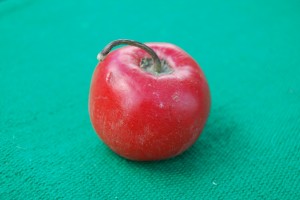
To add to the mystery of why Peruvian condiments did not cross the oceans with the Spanish, Garcilaso mentions only the hot peppers as the main condiment. But even there, we find a mystery. The common name almost everywhere for these peppers which may well have originated in South America is the Mexican chilli, rather than either the Caribbean aji [which is the common word in Peruvian Spanish now] or the indigenous uchu.
Nevertheless, the pepper rocoto, the least esteemed of all according to Garcilaso though not this writer, made its way throughout the Spanish world, if not the English speaking. In Mexico it is often called an apple chile (chile manzano).
While some of the peppers made the transition, most of the other herbs are not only not discussed by Garcilaso here as condiments nor did they travel. But they are still used in Cuzco and, if you eat local cuisine or Neo-Andean food, you are likely to taste them. In what follows we shall describe some of the most common.
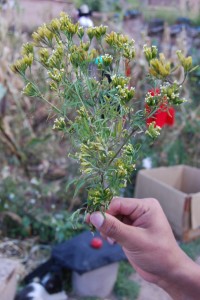
Huacatay (or Wakatay) is perhaps the most common herb found in Cuzco.
A member of the same family as the marigold it is considered an anti-nemotoidal plant in the US to help organic agriculture, but is generally not eaten though that will change with increasing immigration from Peru.
In English this herb is often called “black mint” and has a very heady, herby flavor that, like cilantro, can be off putting at first but soon becomes a passion. Botanists identify it as tagetes minuta and it is commonly found as a condiment for soups, meats, and as a basic ingredient of a common sauce accompnying food, llantán.
Increasingly huacatay is avalable dried, frozen, or bottled for the Peruvian ex-pat community in North American and Europe. As a result interested foodies can also obtain it and try it.
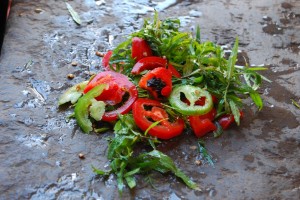
Paiko is another common herb used frequently in food in Cuzco. This plant shares a botanical identification with the Mexican herb Epazote that is becoming more and more known in the united States, chenopodium ambrosioides.
As a chenopodium it is a relative of the quinoa that is so popular today. While young leaves of the quinoa are often eaten as a green, they do not have the intense flavor of the condiment which led the botanists to relate it to ambrosia. It also has a heady rich aroma and flavor, although less intense than that of huacatay and is frequently added to soups and other dishes.
Another very common herb is called muña. It has a rich minty smell that can move from herby to sharp or sweet. Frequently drunk in teas or smelled for its medicinal benefit of calming digestive problems or helping with altitude sickness, muña is also used as a condiment for food.
However, there are at least two different plants that are called muña. And to further confound things, one variety of muña is also called oregano–since this word covers so many pungent herbs around the world that are unrelated to the origanum species of the Mediterranean.
Both Clinopodium bolivianum, and Mintostachys (various species) are considered muña. For us who like to tie things down into nice botanical order, this can be confusing.
But it suggests we pay less attention to botanists and more attention to how people themselves classify things. Here we get a contrast among the very strong huacatay, the less strong paiko, and the more minty or thymy muña. In any case these three give a wonderful palate of flavors for seasoning food in an indigenous fashion not unlike that of the Inca empire.
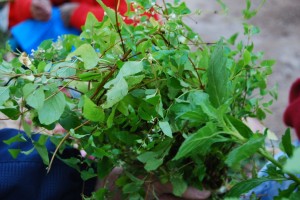
People go to the markets in Cuzco in search of fresh herbs, if they just don’t go and snip them from heir garden. There they can buy bunch of herbs called an asnapa that is classic for Cuzco cuisine. The asnapa generally includes oregano, rue (a plant that is almost never used for food in Anglo North America), cilantro, yerba buena (“good herb” or a sweet mint that can often be a form of muña), parsley, muña, huacatay, and paiko.
Although the asnapa contains some European imports — oregano, rue, cilantro, and parsley– and even these are not always so clearly foreign as we noted for oregano and yerba buena–nevertheless the core flavors come straight from the Incas and before.
As a result, the seasoning of food in Cuzco contains an amazing and generally unremarked continuity from before Pizarro and his fellow Spaniards landed in Peru. Though Cuzco contains wonderful international food, this flavor palate is available for those who wish to taste what flavors made Imperial Inca food tasty, whether one wishes to taste local rocotos or other peppers, or the Inca herbs. They are there for the tasting.




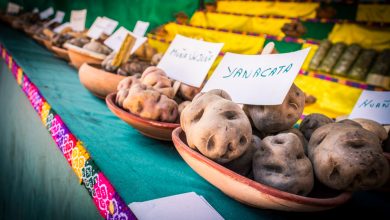
This really is a outstanding post. Many thanks for taking a few minutes to explain all of this out for folks. It’s a great guide!